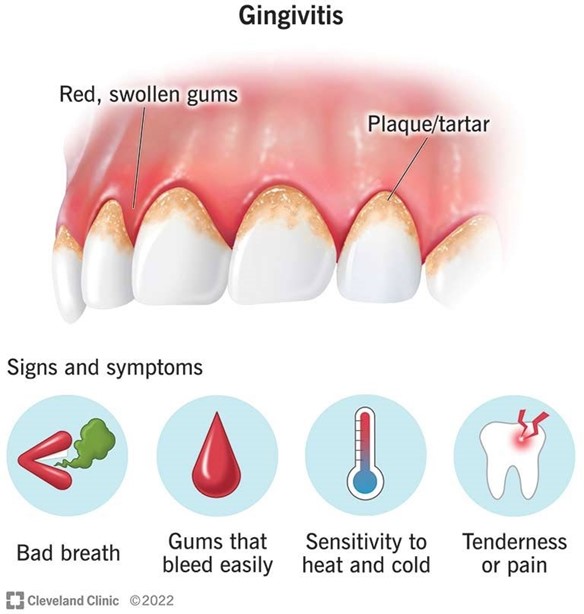A dentist informs the practical nurse (PN) that she has a family history of cancer and has increased the amount of dairy products in her diet to reduce the risk of gingivitis. How should the PN respond?
Suggest an increase in fruits and vegetables is more beneficial
Encourage the client to get plenty of exercise as well as the dietary change
Remind the client to make sure the dairy products are fortified with Vitamin D
Provide writen information about the warning signs of cancer
The Correct Answer is A
a) Suggest an increase in fruits and vegetables is more beneficial.
In this scenario, the dentist is increasing the amount of dairy products in her diet with the aim of reducing the risk of gingivitis due to her family history of cancer. However, the practical nurse (PN) should respond by suggesting that an increase in fruits and vegetables would be more beneficial.
Fruits and vegetables are rich in essential vitamins, minerals, and antioxidants, which can help support overall oral health and reduce the risk of gingivitis. They provide a wide range of nutrients that are important for maintaining healthy gums and teeth.
While dairy products can contribute to overall dental health due to their calcium content, they should not be solely relied upon as the primary means of preventing gingivitis or reducing the risk of cancer. A well- rounded and balanced diet, including plenty of fruits and vegetables, is essential for optimal oral health.
Options b, c, and d are not directly related to the dentist's concern about gingivitis and the increased consumption of dairy products. Encouraging exercise (option b) is generally beneficial for overall health, but it does not specifically address gingivitis. Reminding the client to ensure dairy products are fortified with vitamin D (option c) is not necessary in this context, as the focus is on preventing gingivitis rather than addressing vitamin D deficiency. Providing writen information about the warning signs of cancer (option d) is not directly relevant to the dentist's current situation and concern about gingivitis.

Nursing Test Bank
Naxlex Comprehensive Predictor Exams
Related Questions
Correct Answer is B
Explanation
Choice A rationale:
Exenatide does not work in the same way as insulin in lowering blood glucose levels. Exenatide is a glucagon-like peptide-1 receptor agonist (GLP-1 agonist) that works by stimulating insulin secretion in response to elevated blood glucose levels, slowing gastric emptying, and suppressing glucagon release. It does not act like exogenous insulin.
Choice B rationale:
Injecting exenatide within 30 minutes before or after a meal is the correct instruction. This timing is essential because exenatide works best when it is coordinated with meals to help control post-meal blood glucose spikes.
Choice C rationale:
There are precautions about taking exenatide with other medications. It is important for the client to discuss all medications, including potential interactions, with their healthcare provider. Some medications may need to be adjusted when taken with exenatide.
Choice D rationale:
Notifying the healthcare provider if abdominal pain occurs is a valid instruction. Exenatide can sometimes cause gastrointestinal side effects, including abdominal pain. It is essential for the client to report any adverse effects to their healthcare provider for appropriate management.
Correct Answer is C
Explanation
Choice A rationale:
While it’s important to monitor for any adverse reactions following a vaccination, not all fevers are serious. Mild fever can be a common side effect of vaccinations and is usually not a cause for concern. However, if the child develops a high fever, or if the fever is accompanied by other severe symptoms such as difficulty breathing or extreme lethargy, it should be reported to a healthcare provider immediately.
Choice B rationale:
There is no need to keep the child home from daycare following the Hib vaccine unless the child is feeling unwell or has other symptoms that warrant staying home. The Hib vaccine is not a live vaccine, so the child cannot transmit the vaccine strain to others.
Choice C rationale:
Applying a cool pack to the injection site can help reduce discomfort or swelling that may occur after the vaccination. This is a safe and effective method for managing minor side effects of vaccinations.
Choice D rationale:
Aspirin should not be given to children due to the risk of Reye’s syndrome, a rare but serious condition that can affect the liver and brain. Instead, over-the-counter pain relievers such as acetaminophen or ibuprofen can be used to help manage any pain or fever following the vaccination, if approved by a healthcare provider. Always follow the dosing instructions on the package and consult with a healthcare provider if unsure.
Whether you are a student looking to ace your exams or a practicing nurse seeking to enhance your expertise , our nursing education contents will empower you with the confidence and competence to make a difference in the lives of patients and become a respected leader in the healthcare field.
Visit Naxlex, invest in your future and unlock endless possibilities with our unparalleled nursing education contents today
Report Wrong Answer on the Current Question
Do you disagree with the answer? If yes, what is your expected answer? Explain.
Kindly be descriptive with the issue you are facing.
